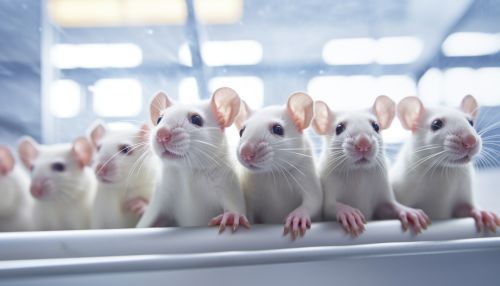Behavioral Genetics
Introduction
Behavioral genetics is a field of study that examines the role of genetic and environmental influences on animal (including human) behavior. Often associated with the "nature versus nurture" debate, behavioral genetics is a complex field spanning molecular biology, psychology, and ethology. It seeks to understand the nature of genetic influence on behavior, the biology of genes and their effects on behavior, and how these interactions lead to individual differences in behavior.


Historical Background
The roots of behavioral genetics can be traced back to the work of Sir Francis Galton in the late 19th century, long before the term itself was coined. Galton, a cousin of Charles Darwin, was the first to systematically investigate the role of heredity in human behavior and mental abilities. His work laid the groundwork for the later development of behavioral genetics.
Genetic Influences on Behavior
Genetic influences on behavior are studied in various ways, including by examining monozygotic (identical) and dizygotic (fraternal) twins, adoptees, and families. These studies have provided evidence that genes play a significant role in the development of behaviors.
Twin Studies
Twin studies are a popular method in behavioral genetics research. By comparing the similarity of monozygotic (MZ) twins (who share 100% of their genes) to that of dizygotic (DZ) twins (who share on average 50% of their genes), researchers can estimate the relative contributions of genetic and environmental factors to behavioral traits.
Adoption Studies
Adoption studies provide another avenue for studying genetic influences on behavior. By comparing adopted children to their biological and adoptive parents, researchers can tease apart the effects of genes and environment.
Family Studies
Family studies look at the resemblance of behaviors and traits among biological relatives. The greater the genetic relatedness, the more similar the behaviors are expected to be, assuming that the behaviors have a genetic component.
Environmental Influences on Behavior
While genetics can play a significant role in behavior, the environment also has a profound impact. Environmental influences on behavior can be divided into shared and non-shared environments.
Shared environment refers to those environmental factors that contribute to similarities among family members. These can include socioeconomic status, parenting practices, and cultural influences.
Non-shared environment refers to those environmental factors that are unique to each individual, contributing to differences among family members. These can include differential treatment by parents, unique experiences, and personal perceptions of shared events.
Gene-Environment Interactions
Behavioral genetics also studies gene-environment interactions, which refers to the idea that genetic and environmental influences on behavior are not independent of each other, but rather, interact in complex ways.
Molecular Genetics and Behavior
Molecular genetics is a branch of genetics that studies the structure and function of genes at a molecular level. This field has provided tools for identifying specific genes associated with behavior, and for understanding how these genes function.
Behavioral Genomics
Behavioral genomics is a rapidly developing field that uses genome-wide association studies (GWAS) to identify genetic variants associated with behavioral traits. This approach has the potential to provide a more comprehensive understanding of the genetic basis of behavior.
Ethical Issues in Behavioral Genetics
Behavioral genetics raises a number of ethical issues, including concerns about genetic determinism, privacy and confidentiality, and the potential for genetic discrimination.
